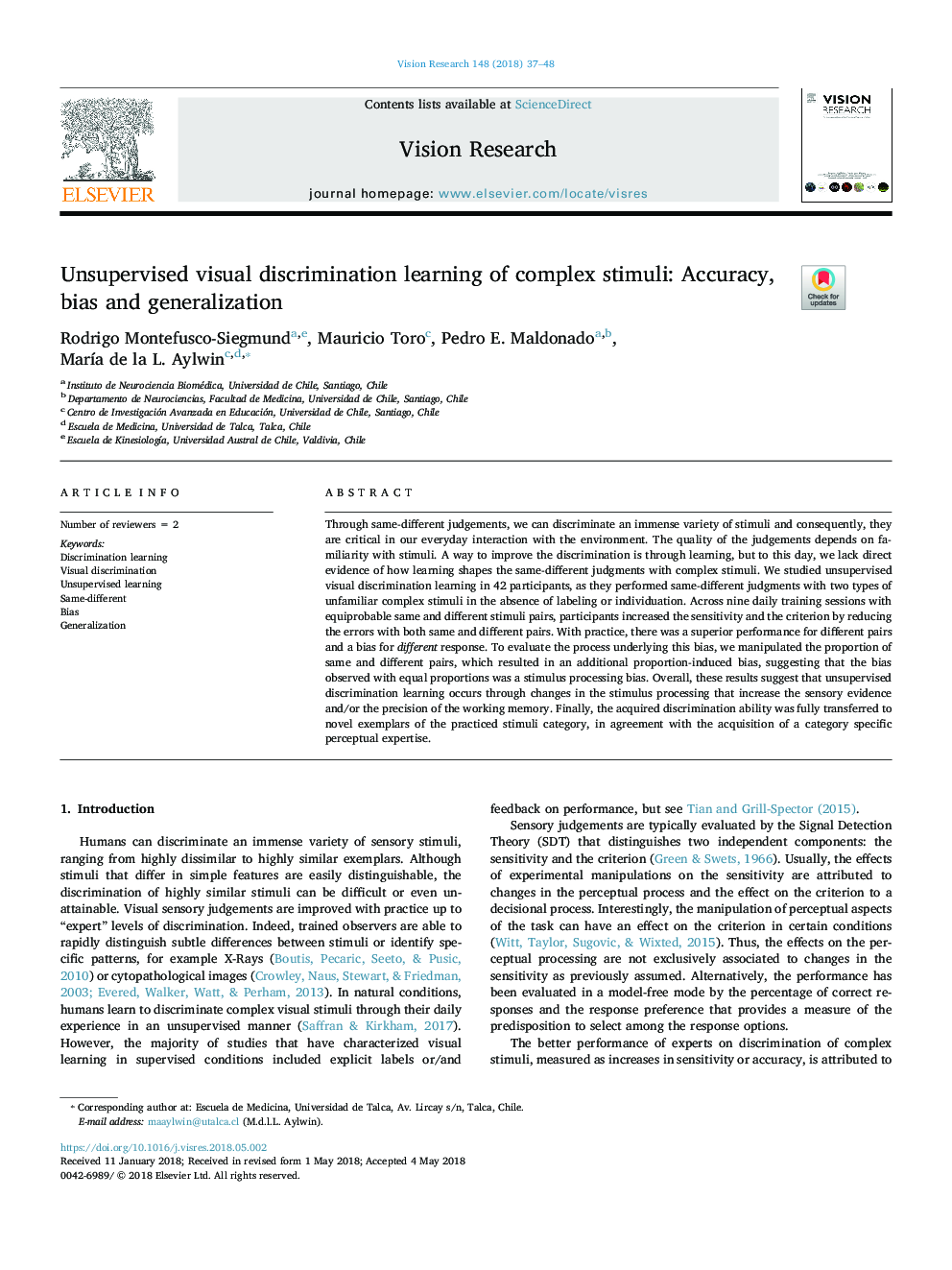| Article ID | Journal | Published Year | Pages | File Type |
|---|---|---|---|---|
| 8795297 | Vision Research | 2018 | 12 Pages |
Abstract
Through same-different judgements, we can discriminate an immense variety of stimuli and consequently, they are critical in our everyday interaction with the environment. The quality of the judgements depends on familiarity with stimuli. A way to improve the discrimination is through learning, but to this day, we lack direct evidence of how learning shapes the same-different judgments with complex stimuli. We studied unsupervised visual discrimination learning in 42 participants, as they performed same-different judgments with two types of unfamiliar complex stimuli in the absence of labeling or individuation. Across nine daily training sessions with equiprobable same and different stimuli pairs, participants increased the sensitivity and the criterion by reducing the errors with both same and different pairs. With practice, there was a superior performance for different pairs and a bias for different response. To evaluate the process underlying this bias, we manipulated the proportion of same and different pairs, which resulted in an additional proportion-induced bias, suggesting that the bias observed with equal proportions was a stimulus processing bias. Overall, these results suggest that unsupervised discrimination learning occurs through changes in the stimulus processing that increase the sensory evidence and/or the precision of the working memory. Finally, the acquired discrimination ability was fully transferred to novel exemplars of the practiced stimuli category, in agreement with the acquisition of a category specific perceptual expertise.
Keywords
Related Topics
Life Sciences
Neuroscience
Sensory Systems
Authors
Rodrigo Montefusco-Siegmund, Mauricio Toro, Pedro E. Maldonado, MarÃa de la L. Aylwin,
